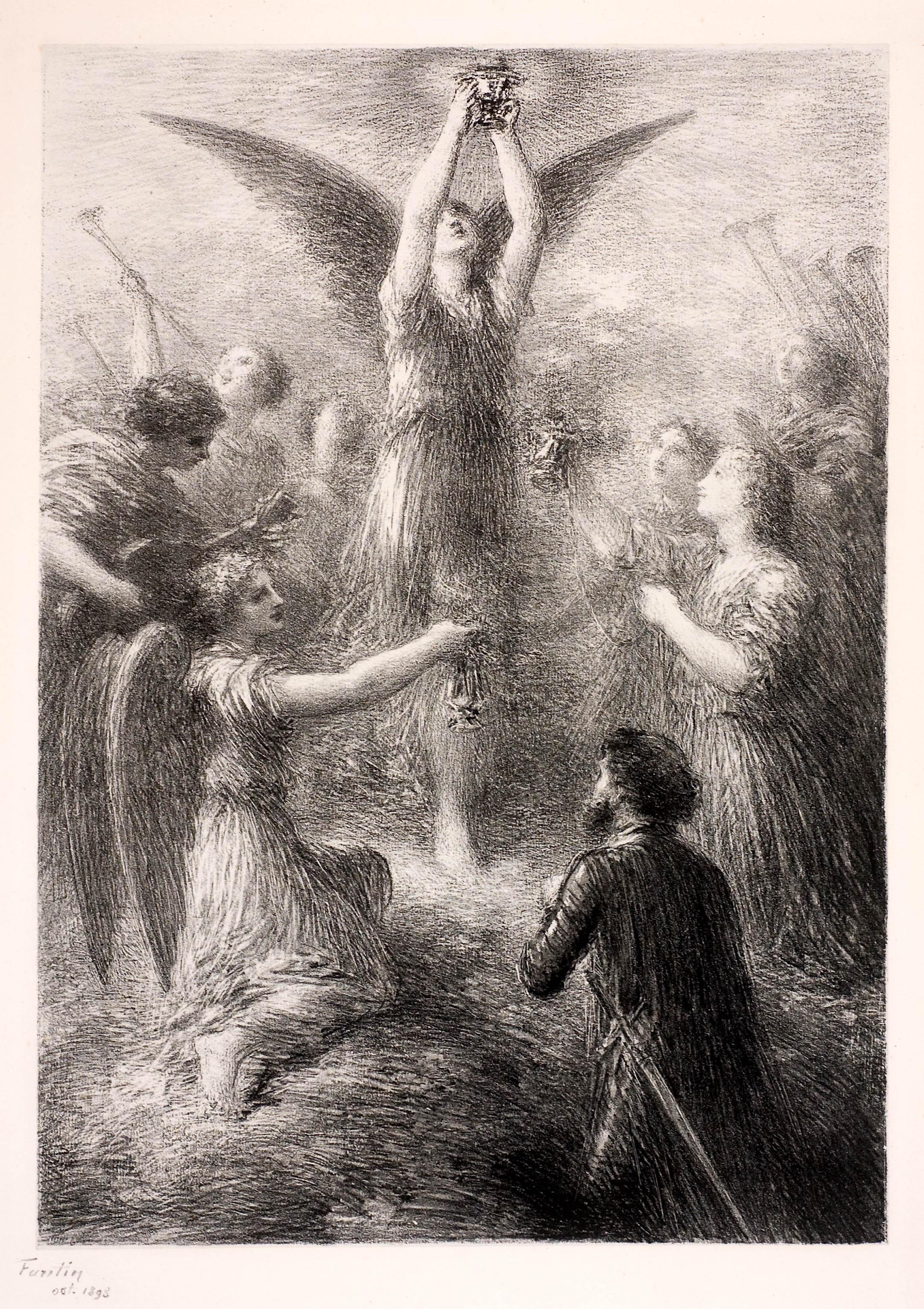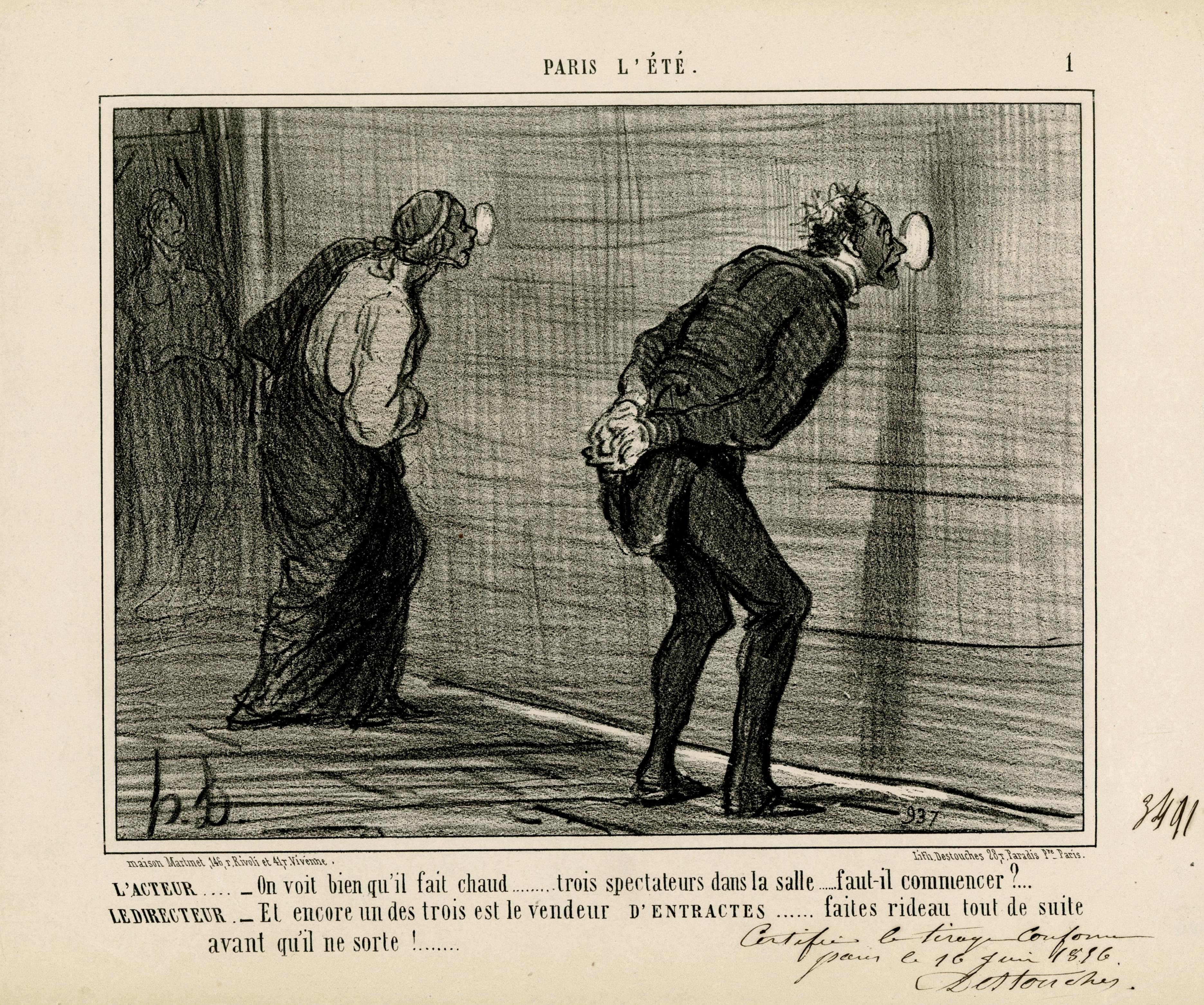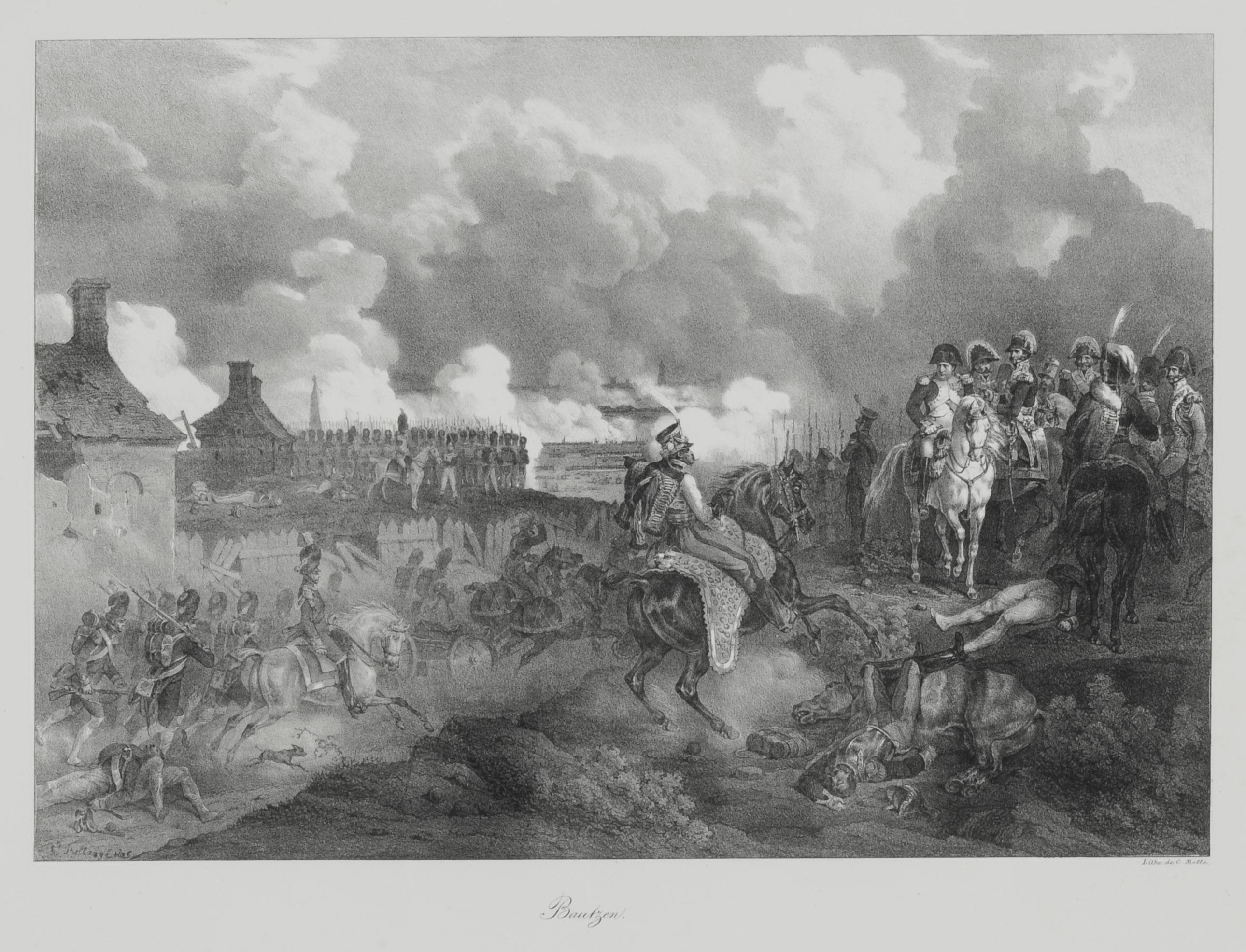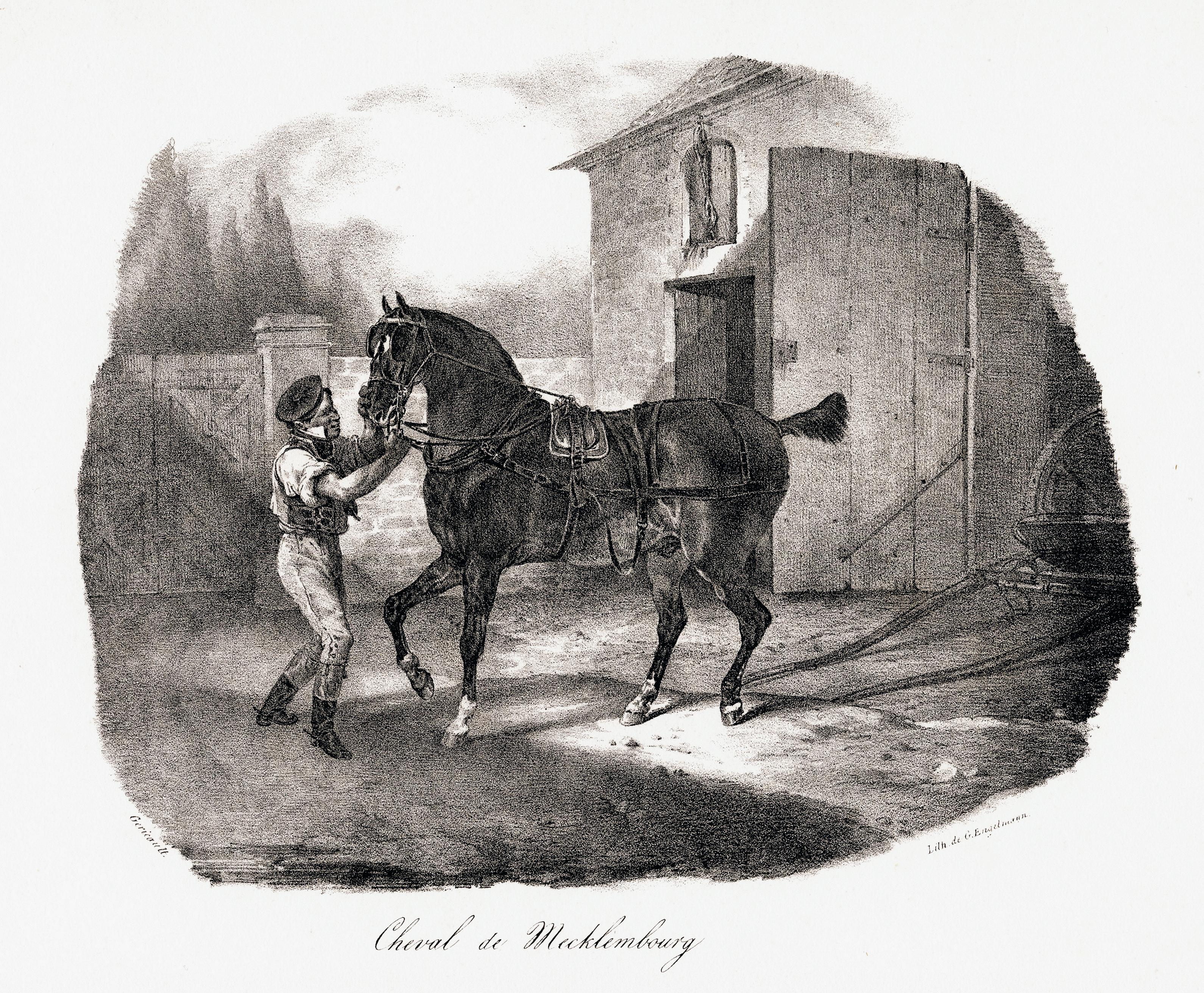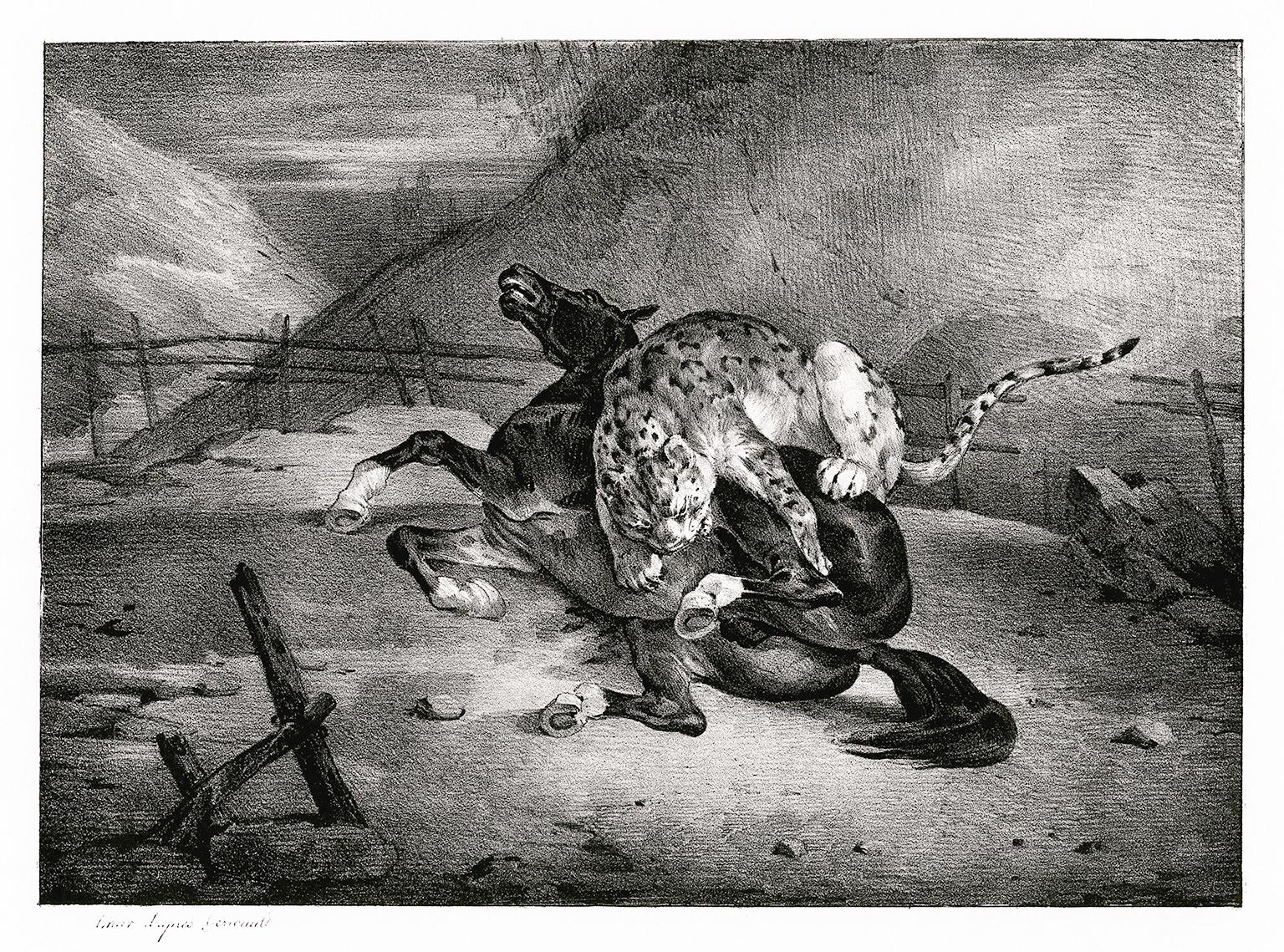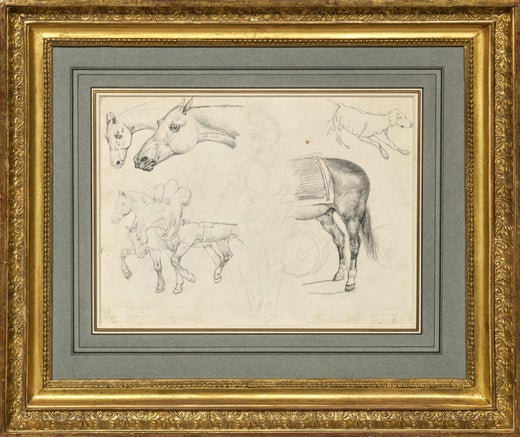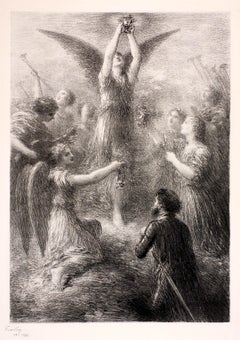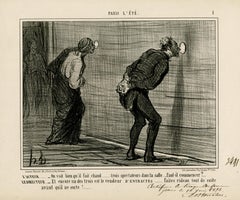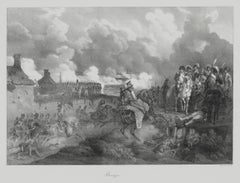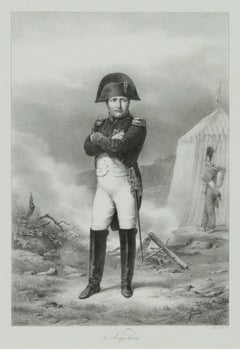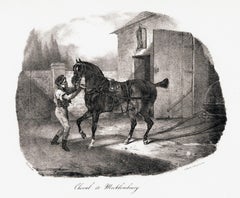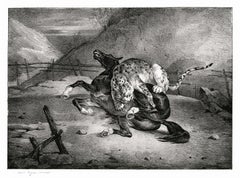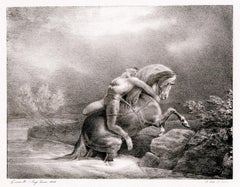Items Similar to Passage du Mont Saint-Bernard
Want more images or videos?
Request additional images or videos from the seller
1 of 11
Jean Louis Andre Theodore GericaultPassage du Mont Saint-Bernard1822
1822
About the Item
Theodore Gericault (1791-1824)
Passage du Mont Saint-Bernard
Lithograph, 1822
Signed and titled in the stone
As published in Arnault "Vie politique et militaire de Napoleon"
Condition: Excellent, aging as expected
Image size: 14 x 161 1/4 inches
Sheet size: 18 7/8 x 24 3/8 inches
Reference: Delteil 44 iv/IV, published state
Théodore Géricault
French painter
Born: September 26, 1791 Rouen France
Died: January 26, 1824 (aged 32) Paris France
Notable Works: “The Charging Chasseur” “The Raft of the Medusa”
Movement / Style: Romanticism
Théodore Géricault, in full Jean-Louis-André-Théodore Géricault, (born September 26, 1791, Rouen, France—died January 26, 1824, Paris), painter who exerted a seminal influence on the development of Romantic art in France. Géricault was a dandy and an avid horseman whose dramatic paintings reflect his flamboyant and passionate personality.
As a student, Géricault learned the traditions of English sporting art from the French painter Carle Vernet, and he developed a remarkable facility for capturing animal movement. He also mastered classicist figure construction and composition under the academician Pierre-Narcissse, Baron Guérin. Another student of Guérin, Eugène Delacroix, was profoundly influenced by Géricault, finding in his example a major point of departure for his own art.
As demonstrated by his earliest major work, The Charging Chasseur (1812), which depicts an officer astride a rearing horse on a smoky battlefield, Géricault was drawn to the colourist style of the Baroque painter Peter Paul Rubens and to the use of contemporary subject matter in the manner of an older colleague, the painter Antoine-Jean Gros. At the Salon of 1814, Géricault’s Wounded Cuirassier shocked critics with its mournful subject and sombre colours. While in Florence and Rome (1816–17), he became fascinated with Michelangelo and Baroque art. His chief project at this time was Race of the Riderless Horse, a heroic frieze composition (never completed) depicting a dangerous race that was an annual event.
After returning to France, Géricault drew a group of lithographs on military subjects that are considered among the earliest masterworks in that medium. Géricault’s masterpiece is the large painting entitled The Raft of the Medusa (c. 1819). This work depicts the aftermath of a contemporary French shipwreck, whose survivors embarked on a raft and were decimated by starvation before being rescued at sea. The shipwreck had scandalous political implications at home—the incompetent captain, who had gained the position because of connections to the Bourbon Restoration government, fought to save himself and senior officers while leaving the lower ranks to die—and so Géricault’s picture of the raft and its inhabitants was greeted with hostility by the government. The work’s macabre realism, its treatment of the raft incident as epic-heroic tragedy, and the virtuosity of its drawing and tonalities combine to give the painting great dignity and carry it far beyond mere contemporary reportage. The portrayal of the dead and dying, developed within a dramatic, carefully constructed composition, addressed a contemporary subject with remarkable and unprecedented passion.
Disappointed by the reception of The Raft of the Medusa, Géricault took the painting to England in 1820, where it was received as a sensational success. He remained there for two years, enjoying the equine culture and producing a body of lithographs, watercolours, and oils of jockeys and horses. Upon his return to France, his friendship with Étienne Georget, a pioneer in psychiatric studies, inspired his series of portraits of victims of insanity, each of whom was seen as a “type” of affliction, including Kleptomania and Delusion of Military Command. Repeated riding accidents and chronic tubercular infections ruined his health, and he died after a long period of suffering.
This article was most recently revised and updated by Amy Tikkanen.
Rich impression
- Creator:Jean Louis Andre Theodore Gericault (1791 - 1824, French)
- Creation Year:1822
- Dimensions:Height: 14 in (35.56 cm)Width: 16.25 in (41.28 cm)
- Medium:
- Movement & Style:
- Period:
- Condition:
- Gallery Location:Fairlawn, OH
- Reference Number:Seller: FA40401stDibs: LU14012363812
Jean Louis Andre Theodore Gericault
Théodore Géricault was born in Rouen in 1791 into a wealthy family from the Manche region. His father, a magistrate and wealthy landowner, ran a tobacco factory. The family moved to Paris around 1796, and in 1810 Théodore Géricault entered Carle Vernet's studio, where he met his son Horace. He then studied with Pierre-Narcisse Guérin before enrolling on February 5, 1811 at the École des Beaux-Arts in Paris, where he pursued a classical training based on copying the masters at the Louvre Museum. Géricault was expelled from the École des Beaux-Arts in 1812 for his misconduct; he then rented a back store on rue de la Michodière, where he painted one of his first masterpieces, a portrait of an officer of the imperial guard (the Lieutenant Dieudonné) charging while on horseback. This painting was exhibited at the 1812 Salon and won him the gold medal at the age of 21! Géricault became a sought-after painter, specializing in military subjects. Géricault falled in love with his aunt Alexandrine Caruel de Saint-Martin (the wife of his mother's brother). Aged 28 years younger than her husband, she was only 6 years older than him. From this affair, which lasted for many years, a son Georges-Hippolyte was born in 1818. After a short engagement in King Louis XVIII's Company of Grey Musketeers, Géricault, disappointed at not winning the Prix de Rome, spent two years in Italy. On his return in 1817, he embarked on the creation of his masterpiece, The Raft of the Medusa, which was exhibited in the Louvre in 1819 and was negatively received by the critics. The presentation of the Raft in London in 1820 brought Géricault to the English capital, first for a two-month period between April and June 1820, then again in 1821 after a return to the continent and a stay in Brussels. The painting was triumphantly received in England (partly for the opposite political reasons to those that had led to its unsuccessful reception in France), and 50,000 visitors flocked to Bullock's gallery where it was exhibited during six months. In November 1821, Géricault returned home very weakened by a venereal disease contracted probably during his stay in England. He fell off his horse several times, and in August 1823 broke his back in a fall. He died at the age of thirty-two on January 24, 1824, after a long agony.
About the Seller
5.0
Recognized Seller
These prestigious sellers are industry leaders and represent the highest echelon for item quality and design.
Platinum Seller
Premium sellers with a 4.7+ rating and 24-hour response times
Established in 1978
1stDibs seller since 2013
785 sales on 1stDibs
Typical response time: <1 hour
Associations
International Fine Print Dealers Association
- ShippingRetrieving quote...Shipping from: Akron, OH
- Return Policy
Authenticity Guarantee
In the unlikely event there’s an issue with an item’s authenticity, contact us within 1 year for a full refund. DetailsMoney-Back Guarantee
If your item is not as described, is damaged in transit, or does not arrive, contact us within 7 days for a full refund. Details24-Hour Cancellation
You have a 24-hour grace period in which to reconsider your purchase, with no questions asked.Vetted Professional Sellers
Our world-class sellers must adhere to strict standards for service and quality, maintaining the integrity of our listings.Price-Match Guarantee
If you find that a seller listed the same item for a lower price elsewhere, we’ll match it.Trusted Global Delivery
Our best-in-class carrier network provides specialized shipping options worldwide, including custom delivery.More From This Seller
View AllPrelude de Lohengrin (2e planche) (The Appearance of the Holy Grail)
By Henri Fantin-Latour
Located in Fairlawn, OH
Prelude de Lohengrin (2e planche) (The appearance of the Holy Grail)
Lithograph, 1898
Signed and dated in the stone lower left (see photo)
Printed on chine collee paper
Condition...
Category
1890s Romantic Figurative Prints
Materials
Lithograph
L'ACTEUR . . . . - On voit bien qu'il fait chaud . . . . . . . trois spectateurs
By Honoré Daumier
Located in Fairlawn, OH
L'ACTEUR . . . . - On voit bien qu'il fait chaud . . . . . . . trois spectateurs dans la salle ..... faut-il commencer ? . . . .
LE DIRECTEUR .- Et encore un des trois est le vendeu...
Category
1850s Romantic Figurative Prints
Materials
Lithograph
Napoleon a Bautzen
By Hippolyte Bellangé
Located in Fairlawn, OH
Napoleon a Bautzen
Lithograph, 1822
Signed in the stone (see photo)
From: Arnault, A. V.
Vie Politique et Militaire de Napoleon (120 plates)
Published, Paris, Librairie Historiquem 1...
Category
1820s Romantic Figurative Prints
Materials
Lithograph
Napoleon Standing
Located in Fairlawn, OH
Napoleon Standing
Lithograph, 1822
Signed in the stone lower left corner of image (see photo)
From: Arnault, A. V.
Vie Politique et Militaire de Napoleon (120 plates)
Published, Paris, Librairie Historiquem 1822
Printed by C. Motte, Paris
Considered to be the major pictorial treatise on Napoleon and his military conquests.
Image size: 14 x 9 3/4 inches
Sheet size: 23 5/8 x 17 3/4 inches
Condition: Very good
Horizontal prints...
Category
1820s Romantic Figurative Prints
Materials
Lithograph
Phrosine and Mélidore
Located in Fairlawn, OH
Phrosine and Mélidore
Etching, 1879
Signed in the polate lower left of image
This etching is after the Dantan painting, a copy after the Pierre-Paul Prud’hom painting
Published by Vv...
Category
1870s Romantic Figurative Prints
Materials
Etching
Book 1, line 192: Satan on the Burning Lake
By John Martin
Located in Fairlawn, OH
Book 1, line 192: Satan on the Burning Lake
Mezzotint, 1825
Engraved signature below the image (see photo)
From John Milton's "Paradise Lost"
Published by Septimus Prowett
Printed by...
Category
1820s Romantic Figurative Prints
Materials
Mezzotint
You May Also Like
'Cheval de Mecklembourg' — 19th-Century French Romanticism
By Jean Louis Andre Theodore Gericault
Located in Myrtle Beach, SC
Théodore Géricault 'Cheval de Mecklembourg' (Mecklembourg Horse), lithograph, 1822, 2nd state of 4, Delteil 47. Signed in the matrix 'Gericault', lower left. Published by Godefroy En...
Category
1820s Romantic Animal Prints
Materials
Lithograph
Woman with Birds
By Sunol Alvar
Located in San Francisco, CA
Artist: Alvar
Title: Woman with Birds
Year: c.1980
Medium: Color lithograph
Paper: Wove
Image size: 18.5 x 24.5 inches
Framed size: 26.5 x 32.65 inc...
Category
Late 20th Century Romantic Figurative Prints
Materials
Lithograph
'Horse Attacked by Tiger' — 19th-Century French Romanticism
By Jean Louis Andre Theodore Gericault
Located in Myrtle Beach, SC
Théodore Géricault (after), 'Tigre dévorant un cheval' (Tiger Devouring a Horse), lithograph, 3rd state of 3, Clement 97, c. 1820. Lettered 'Volmar ...
Category
1820s Romantic Animal Prints
Materials
Lithograph
'Mazeppa' — 19th-Century French Romanticism
By Jean Louis Andre Theodore Gericault
Located in Myrtle Beach, SC
Théodore Géricault and Eugène Lami, 'Mazeppa' from the series 'Oeuvres de Lord Byron', lithograph, 1823, 2nd state of 3, Delteil 94. Rendered by Thé...
Category
1820s Romantic Animal Prints
Materials
Lithograph
'Le maréchal flamand' (The Flemish Blacksmith) — 19th-Century French Romanticism
By Jean Louis Andre Theodore Gericault
Located in Myrtle Beach, SC
Théodore Géricault 'Le maréchal flamand' (The Flemish Blacksmith) from the series ‘Etudes, de chevaux lithographiés,’ lithograph, 1822, 2nd state ...
Category
1820s Romantic Animal Prints
Materials
Lithograph
Heart
By Jim Dine
Located in Winterswijk, NL
Color offset lithograph
Made for an exhibition at the Galerie Maeght
Paris, 12 April - 20 May 1983.
Image in great condition, marginal defects
Category
1980s Romantic Figurative Prints
Materials
Lithograph
$183 Sale Price
20% Off
